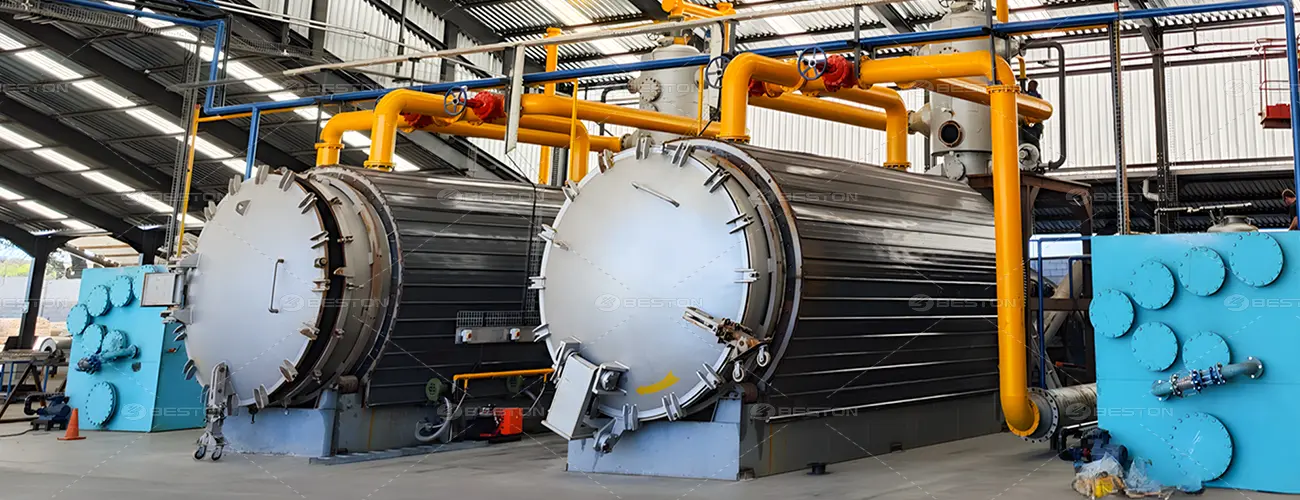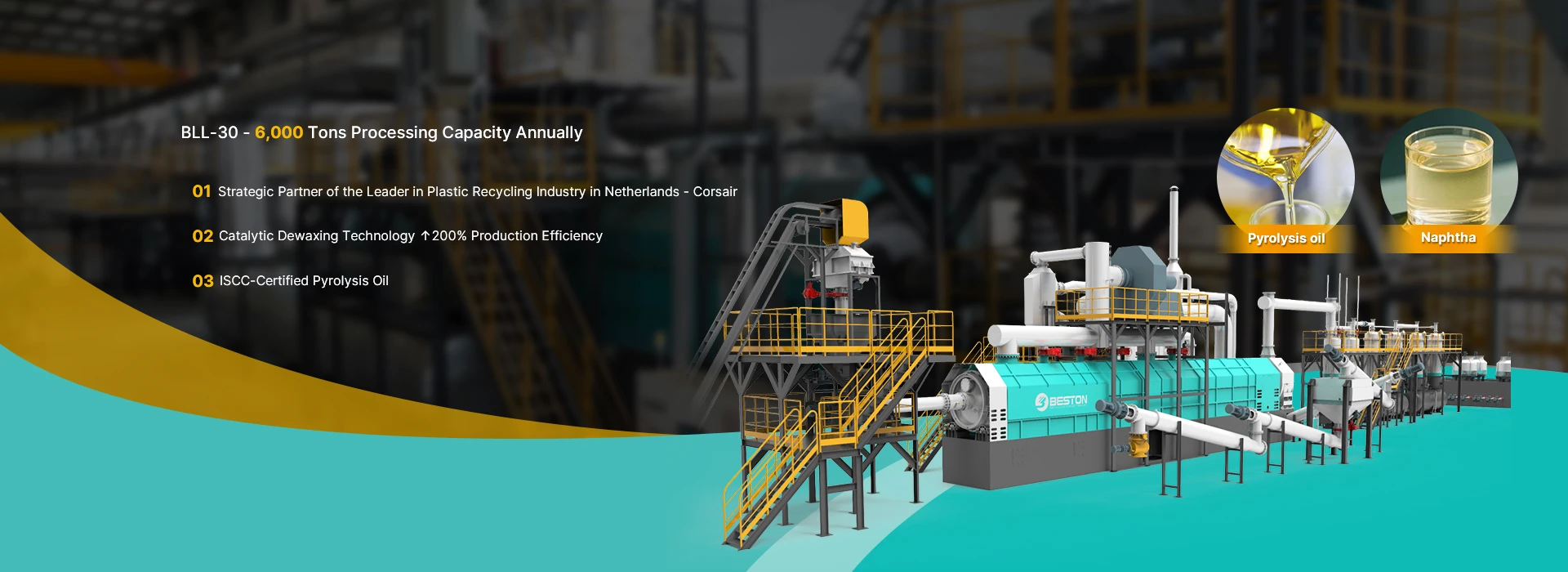
Plastic to oil machine offers a sustainable solution for waste reduction and resource recovery. By employing advanced pyrolysis technology, it annually turns up to 6000 tons plastic waste into ISCC-certified plastic pyrolysis oil, a widely used alternative fuel and chemical feedstock. This benefits both sustainable economic development and environmental preservation. Partner with Beston Group and explore this promising business opportunity today!
BLL-30 Plastic to Oil Machine: Technical Breakthrough in Pyrolysis
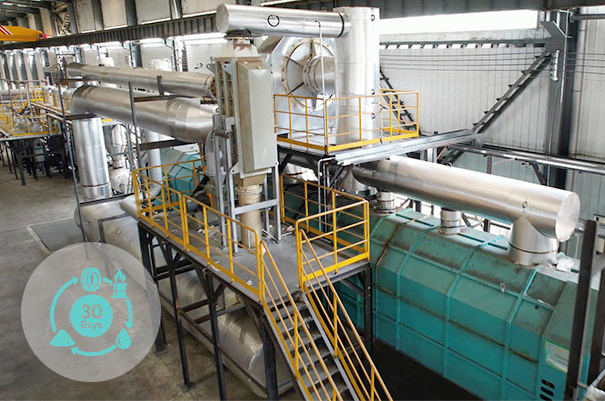
30 Days Non-stop Operation, 6000 T/Y Capacity
Advanced oil-gas condensation technology utilizes spray cooling to reduce temperatures rapidly. Long-term benefits:
- Meet industrial-scale plastic waste recycling demands.
- Reduce investment risk with higher production reliability.
- Deliver consistent oil output and predictable returns.
55% Energy-saving, 50% Emission Reduction
By recycling 100% of waste heat of hot flue gas, the BLL-30 continuous pyrolysis plant drastically improves energy efficiency. Long-term benefits:
- Obviously reduce fuel consumption and operational costs.
- Better comply with global environmental standards.
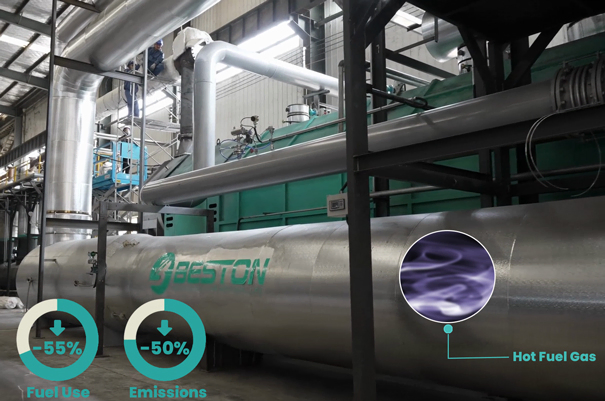

Automatic Temperature Control with ±10℃ Accuracy
The pyrolysis reactor allows self-adjustments to maintain optimal pyrolysis conditions within a ±10℃ range. Long-term benefits:
- High automation, requiring only 2 operators.
- Easy to operate, lowering skill requirements for workers.
- Stable pyrolysis conditions, bringing consistent oil quality and yield.
Catalytic Pyrolysis: Core Technology Advantage of Plastic to Oil
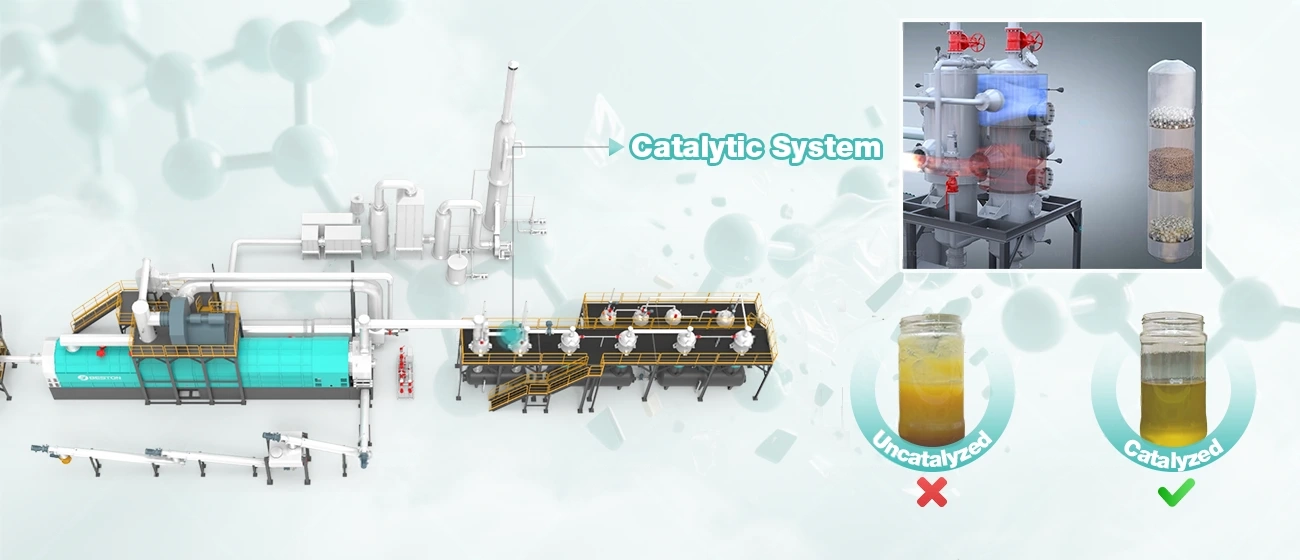
Improve Oil Quality – ISCC Certify
Using catalysts significantly reduces the wax content in the oil produced during the plastic pyrolysis process, resulting in a higher-quality end product. This means the oil is purer and performs better, making it suitable for a wider range of industrial applications.
Improve 200% Production Efficiency
With the reduction of wax in the pyrolysis oil, the risk of pipeline blockages is greatly minimized. This directly reduces downtime due to cleaning and maintenance, significantly lowering maintenance costs and improving operational efficiency.
Improve Operation Safety
Wax accumulation causes pipeline blockages and leads to increased internal pressure within plastic pyrolysis equipment, posing safety risks. Catalytic dewaxing prevents this from occurring, ensuring stable and safe operation of plastic to oil machine.
Global Plastic to Oil Projects
Plastic Types Analysis: Suitability for Pyrolysis and Oil Yield
| Types of Plastic | Applicability to Pyrolysis | Oil Yield (Lab Test) | |
|---|---|---|---|
| Polyethylene Terephthalate | × | low | |
| High-Density Polyethylene | √ | 80%-95% | |
| Polyvinyl Chloride | × | low and dangerous | |
| Low-Density Polyethylene | √ | 80%-95% | |
| Polypropylene | √ | 80%-90% | |
| Polystyrene | √ | 80%-90% | |
| Other Plastics without chlorine and oxygen | √ | / | |
| Other plastics with chlorine and oxygen | × | / |
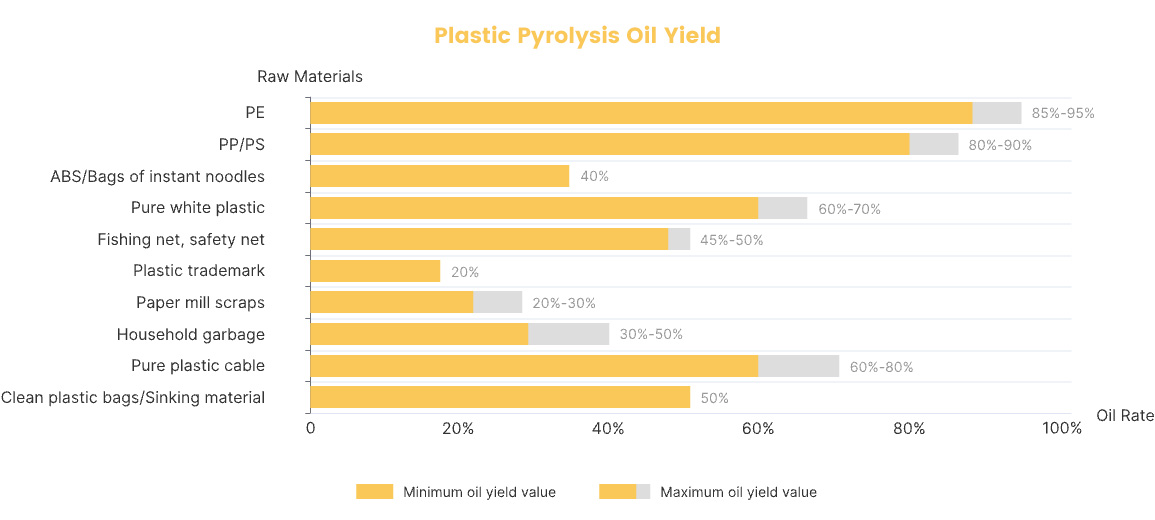
Application of Plastic Pyrolysis Oil

Fuel Resource
Pyrolysis oil from plastic to fuel machine can be widely used as fuel to provide heat. It can reduce greenhouse gas emissions and dependence on non-renewable resources.
- Renewable industrial fuel: Plastic pyrolysis oil can be directly used as a fuel for energy-intensive industry. This reduces consumption of conventional fossil fuels.
- Higher-grade fuel after reprocessing: With further refining and processing, pyrolysis oil can be transformed into non-standard diesel.

Chemical Feedstock
Plastic pyrolysis oil serve as a substitute for petroleum-based raw materials in chemical manufacturing, such as resins, adhesives.
- Naphtha production and plastic production: Pyrolysis oil can be distilled into naphtha, a key feedstock for ethylene production and plastic manufacturing.
- Asphalt production: This oil can serve as a binder in the production of asphalt and road construction to improve performance.
- Wax production: This oil can be processed to produce waxes, which have applications in the candle and pharmaceutical industries.
How to Turn Plastic into Oil? – Plastic to Oil Machine Working
01 Feeding
Feed plastic waste into plastic pyrolysis reactor.
- BLL-30 (Continuous Type): Configured with screw feeder.
- BLJ-16 (Batch Type): Supports manual, hydraulic, or screw feeding.
02 Preheating
03 Catalytic Pyrolysis
04 Condensing
05 Discharging
06 Flue Gas Dedusting
Parameters of Plastic to Oil Machine for Sale
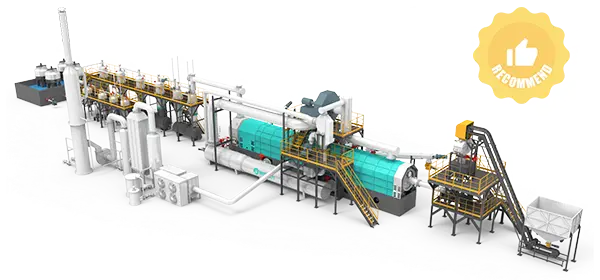
Continuous Type: BLL-30
- Large-scale pyrolysis plant choice: process 6,000 tons annually
- 30 day continuous operation
- High automation: two operators required
- Policy support and incentives
- Easy to get environmental compliance and project approval
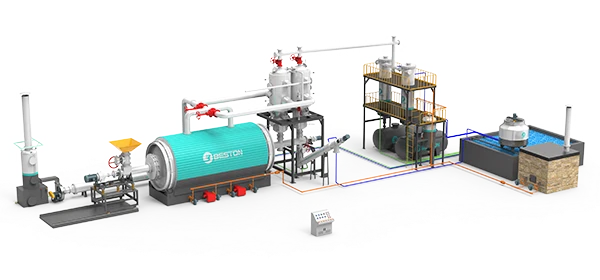
Batch Type: BLJ-16
- Small-scale choice: process 3,000 tons annually
- 1 furnace/day
- 3 Configuration options
| Model | BLL-30 | BLJ-20 | BLJ-16 WAX | BLJ-16 CAT | BLJ-16 Standard | BLJ-16 ULTRA |
|---|---|---|---|---|---|---|
| Manufacturer | BESTON | BESTON | BESTON | BESTON | BESTON | BESTON |
| Time to Market | 2025 | 2025 | 2022 | 2022 | 2013 | 2022 |
| Motor Brand | Chinese brand | Chinese brand | Chinese brand | Chinese brand | Chinese brand | ABB Explosion-proof |
| Suitable Raw Materials | Waste plastics; Tires; Oil sludge | Waste plastics; Tires; Oil sludge | Waste plastic bales (Max.0.9*0.9*1.6m) | Waste plastic bales (Max.0.9*0.9*1.6m) | Whole tire<120cm; Tire blocks<15cm; Oil soil with liquid content<30% | Waste plastics; Tires; Oil sludge |
| Input Capacity (Max.) | Waste plastic pellets: 0.8-1.05t/h Rubber powder: 1.25-1.5t/h Oil sludge:1.8-2.3t/h | Waste plastic pellets: 12-13t/d Tire: 18-20t/d Oil sludge:20-25t/d | 8-10t/batch | 8-10t/batch | Whole tire <120cm or Tire blocks<15cm: 10-12t/batch Sidewall removed tire: 15-16t/batch Oil soil: 16-18t/batch | Waste plastic bales: 8-10t/batch Whole tire <120cm or Tire blocks<15cm: 10-12t/batch Sidewall removed tire: 15-16t/batch Oil sludge: 16-18t/batch |
| Working Method | Fully Continuous | Batch | Batch | Batch | Batch | Batch |
| Final Oil Quality | Pyrolysis oil Pyrolysis oil with wax or naphtha | Pyrolysis oil, Non-standard diesel and naphtha | Pyrolysis oil with wax | Pyrolysis oil with naphtha | Pyrolysis oil | Pyrolysis oil Pyrolysis oil with wax or naphtha |
| Reactor Material | 304/310S Stainless steel | Q345R Boiler steel and 304/316L/310S Stainless steel | 304 Stainless steel | 304 Stainless steel | Q345R Boiler steel | 304 Stainless steel |
| Reactor Life Span (Years) | 5-8 | Q345R Boiler steel 2-3 304/316L Stainless steel 5-8 310S Stainless steel 8-10 | 5-8 | 5-8 | 2-3 | 5-8 |
| Guarantee (Months) | 12 | 12 | 12 | 12 | 12 | 12 |
| Delivery Time (Calendar Days) | 60-90 | 60 | 60 | 60 | 45 | 90 |
| Land Space Required (L*W*H*m) | 70*20*10 | 40*13*8 | 33*13*8 | 33*13*8 | 33*13*8 | 33*26*8 |
| Packing | 20*6*3m in bulk+13*40HQ | 1*40FR+4*40HQ | 1*40FR+3*40HQ | 1*40FR+3*40HQ+1*20GP | 1*40FR+3*40HQ | 1*40FR+8*40HQ |
| Installation Period (Calendar Days) | 60-90 | 45 | 45 | 45 | 45 | 60 |
How to Improve Plastic to Oil Yield?
Focus on Plastics Material Selection
Recommend PE, PP, PS, and more (please to oil yield chart). Avoid plastics with chlorine and oxygen content like PVC and PET, as they can pose hazards and have low oil yields.
Control Heating Temperature and Rate
To get a high oil yield, please use relatively lower high temperatures and a slow heating rate. To maximize gas yield, please keep the reactor at a relatively higher temperatures and a faster heating rate. Recommend intelligent control system.
Auxiliary Distillation Line
Implement a distillation line to further refine and separate the pyrolysis oil into various fractions, which can improve the quality and yield of the final oil product.
Regular Inspection and Cleaning of Equipment
Conduct regular maintenance and cleaning of pyrolysis equipment to prevent blockages and ensure the system operates at its optimal efficiency, thereby maximizing the oil yield.
Unique Designs of Beston Plastic to Oil Machine

Floating Seal Technology
The main reactor combined floating sealing technology uses carbon fiber + high-temperature soft filler combined sealing. Compared with the traditional graphene packing sealing technology, it has good high-temperature resistance, corrosion resistance and wear resistance.
EU-standard Dedusting System
Combined with the higher exhaust gas treatment and wastewater discharge requirements of European clients, it can provide semi-dry or fully dry desulfurization, denitrification and de-dusting system to meet European emission standards.
Hot Air Heating System
Hot air heating method is safer, more uniform in heating, and more precise in temperature control. The most important thing is that waste heat can be recycled, energy saving and emission reduction can save 20-30 % of energy consumption.
Overpressure Alarm System
If overpressure occurs in the main furnace, the safety valve will automatically activate to relieve pressure. This can ensure the safety of both the equipment and personnel.
Torch Safety System
To address overpressure and storage risks from surplus pyrolysis gas and potential emergencies like power outages, a safe, highly automated torch system is installed as an emergency safeguard.
Nitrogen System
Nitrogen is introduced to reactor to replace air before ignition and slag discharge. It prevents flash explosions in the reactor and ensures safe and stable operation of the plastic to oil plant.
Why Plastic-to-Oil Makes Sense: A Comparative Outlook
Current plastic disposal and recycling methods remain limited in both scope and efficiency. Given that plastic bags are made from petroleum, they can be converted back into their original liquid oil form. In this context, plastic pyrolysis-to-oil solutions offer clear and compelling advantages.

Burning/Incineration
- Environment pollution: Burning waste plastics releases around 850 million metric tons of greenhouse gases annually and may emit harmful chemicals.
- Not achieve resource recycling: Burning waste plastics creates non-reusable ash while producing new plastic consumes 8-10% of the world’s petroleum.

Landfill or Leaked into Oceans
- Land/Ocean pollution: Landfill occupies large amounts of land and pollute the soil. Leaking into oceans pollutes oceans and endangers the survival of marine life.
- Slow natural degradation: It takes 20- 500 years or more for a plastic bag to degrade in a landfill. It can’t meet the increasing need for plastic disposal.

Mechanical Recycling
- Limited recycling times: Plastics are not infinitely mechanically recyclable (washing, grinding, pelletizing, etc.). Most plastics can only be recycled 3 to 7 times.
- Reduced plastic quality: Recycled plastics may not perform as well as new ones, impacting market demand and the feasibility of large-scale recycling.
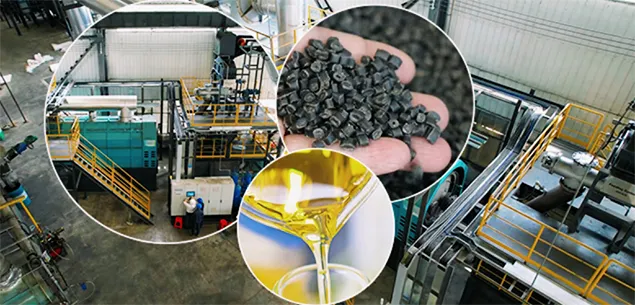
Plastic Pyrolysis into Oil
- Better environmental compliance: Operates in low-oxygen conditions, minimizing toxic emissions like dioxins. Emission control systems further reduce environmental risks.
- Resource recovery: Recycle oil from plastic waste, saving non-renewable petroleum resources.
- High efficiency and scalability: Suit industrial application and solving the challenge of complex plastic waste streams.
Start Plastic-to-Oil Project Now
Beston Group has years of experience in researching and manufacturing plastic to oil machines, delivering reliable and efficient solutions worldwide. We look forward to partnering with forward-thinking leaders like you! More updates on Facebook/YouTube/Linkedin/Pinterest.

